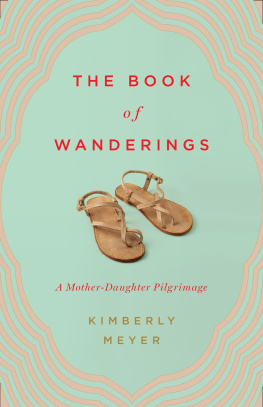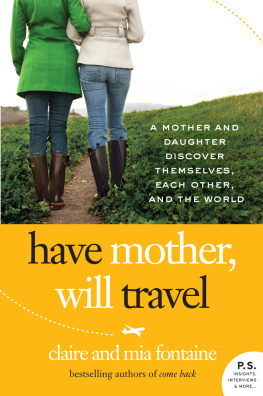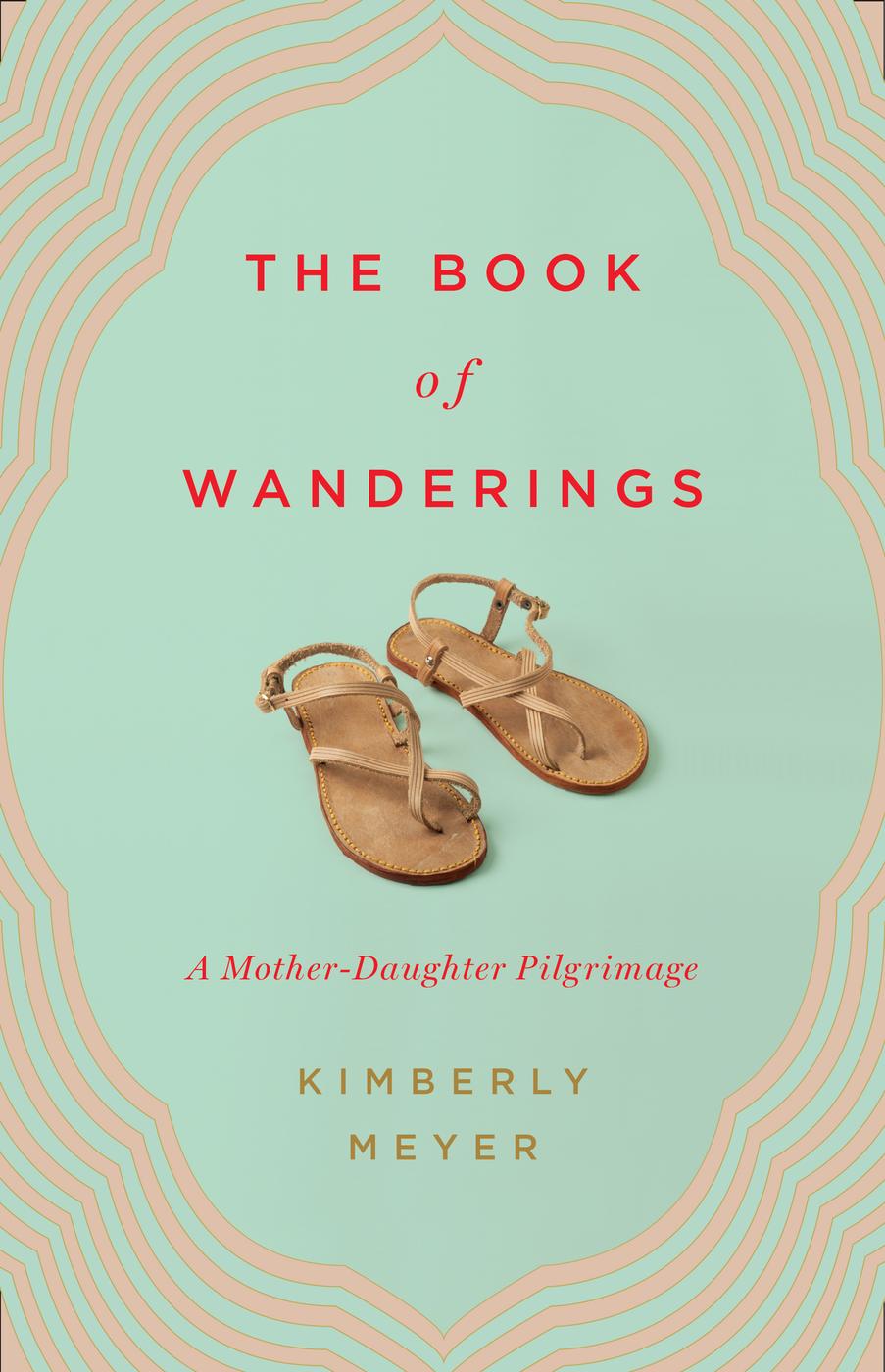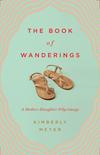In accordance with the U.S. Copyright Act of 1976, the scanning, uploading, and electronic sharing of any part of this book without the permission of the publisher constitute unlawful piracy and theft of the authors intellectual property. If you would like to use material from the book (other than for review purposes), prior written permission must be obtained by contacting the publisher at permissions@hbgusa.com. Thank you for your support of the authors rights.
For Ellie, who went with me
And for Terry and Mary Martha and Sabine,
who let us go
Mon enfant! I give you my hand!
I give you my love, more precious than money,
I give you myself, before preaching or law;
Will you give me yourself? Will you come travel with me?
Shall we stick by each other as long as we live?
Walt Whitman, Song of the Open Road
New Mexico, Texas, Kansas, Oklahoma,
Missouri, Frankfurt, Ulm
And he placed at the east of the garden of Eden Cherubim,
and a flaming sword which turned every way,
to keep the way of the tree of life.
Genesis 3:24
It had never occurred to me before to bless a car. Babies and old people and strangers when they sneezed, perhaps, but never a car. We rarely even washed ours. With three little girls, all still in one form of car seat or another, if our station wagon were ever freed of the broken crayons and melted chocolate kisses ground into the floor mats, this would be miracle enough. But outside El Santuario de Chimay, in the foothills of the Sangre de Cristo (the Blood of Christ Mountains of New Mexico), we watched a priest in his black suit and white surplice sprinkling a navy blue Ford Fairlane with holy water and intoning a prayer in Spanish as the family to whom the car belongedgrandparents, parents, childrenstood around in a semicircle, heads bowed. Was it new, at least to the owners? Was this a kind of baptism? Or had the car broken down? Had there been an accident? Was it being healed? Or exorcised of some grief that had happened in it?
Strange are the instruments of revelation.
This was our first official family road trip, not one in which we were traveling to see relatives or attend a wedding, but a journey just our own. A few days before, my husband, Terry, and our daughters and I had driven away from Houston, away from the shroud of humid air, away from the concrete and the billboards and the suburbs that sprawled incessantly for miles, always bordered by the same stores and restaurants and gas stations that bordered all the suburbs of all the cities of the country. In West Texas, the flat earth opened up onto the Palo Duro Canyon, a jagged tear, and we camped there and listened in the dark to the thrum of crickets and the strumming of a guitar from another campsite nearby. My bones pressed against the hard ground until they forgot they were something separate and I fell asleep.
Days later, outside Santa Fe, dry hills spotted with scrub juniper and pion pine and wooden crosses, we passed a sign for Chimay, and I vaguely remembered having heard something about a chapel there where miracles happened. Should we go back? Terry asked. And perhaps to prove to ourselves that, despite the three little girls in the backseat, we could still be spontaneous, we turned around and onto the two-lane road lined with cottonwood trees and small frame houses and gardens with rows of corn and peppers and zinnias.
The legend of El Santuario de Chimay begins in the year 1810, on the night of Good Friday. In the hills near the village of El Potrero, a landscape that had been sacred to the Tewa and Pueblo Indians before Europeans arrived, Don Bernardo Abeyta, a member of Los Hermanos Penitentes, the Penitent Brothers, is performing his lonely atonements, most likely flagellating himself with a whip made from leaves of the yucca plant. Sometime during that night, Don Bernardo Abeyta sees a light flare from the hillside, and when he reaches the spot, he begins to dig with his bare hands and unearths a crucifix. Three times he carries the crucifix in procession to the church, and three times, by morning, it is gone, buried again in the sandy earth. Finally, the congregation understands what God is trying to tell them: The crucifix must remain where He placed it, and a chapel should be erected around that sacred spot. Then the miraculous healings can begin.
When we arrived, not quite two centuries later, an air of festivity suffused the parking lot of the adobe chapel. Several stands draped with strands of red chili peppers offered burritos and cold drinks for sale, and people wandered in and out of the little souvenir stores. We went into one and looked at the rosaries and matchbox shrines, the bundles of pion incense and Famous Holy Chilies. I picked through trays spread with milagros, small silvery devotional charms, each about the size of a dime and stamped out in various shapeseyes, arms, legs, angels, the Virgin Mary at prayer, even (oh my, was that what I thought it was?) a penis and scrotum. Milagros, the sign read, is the Spanish word for miracles. Milagros are offered to a favorite saint as a reminder of the petitioners particular need, or they are offered to the saint in thanks for a prayer answered.
Back outside, we wandered through an arched gateway and into the small adobe chapel with its hand-hewn pews and ceiling beams and its altar screen, primitively painted in blues and greens and reds, at the center of which hung a crudely carved crucifix. But while our fellow tourists and pilgrims genuflected and crossed themselves and even sat in the wooden pews of the chapel for a few moments in silent prayer, the mood itself felt provisional. This wasnt the destination, and everyone seemed to know it but us. So after a polite interval, we too followed the stream of people stooping as they passed through a doorway off the altar into the sacristy.
We found ourselves in a low-ceilinged, cave-like room whose walls were plastered with the offerings of the grateful and the yearning: crutches and braces, poems and photographs, votive candles, baby shoes, dolls, and all the varied tin milagros signifying broken bodies and inflamed hearts. An elderly man sat on a bench, his head in his hands. Middle-aged white women with fanny packs, Hispanic women, children, and teens all knelt around a pit in the center of the earthen floorit must have been the spot where Don Bernardo Abeyta found the crucifix two centuries ago. Before the pilgrims stood to leave, they scooped some of the sand from the pit into a Ziploc plastic bag or a snack container. Later, back at home, they would sprinkle it over an ailing loved one or perhaps even swallow it themselves. I understood thenits the dirt here thats miraculous, the earth itself that is holy.
When I think of myself and my husband on that trip, standing there in the doorway to the sacristy watching from the other side of belief with our daughters in our arms, it makes me wonder if what we thought was our own spontaneous act of resistance to our staid life in Houston with three little girls was actually an attempt by the universe to reveal something to us. Wake up! was it saying? Pay attention! It makes me wonder if meaning exists embedded in the world, and we need only the eyes to see it. The Spanish word mirar, to look, comes from the same Latin root as miracle, after all. To look carefully is to see the marvel of our existence. Was that the lesson of Chimay? Or was it instead that we imagine we see in material things signs from a world beyonda world beyond that doesnt actually exist?











